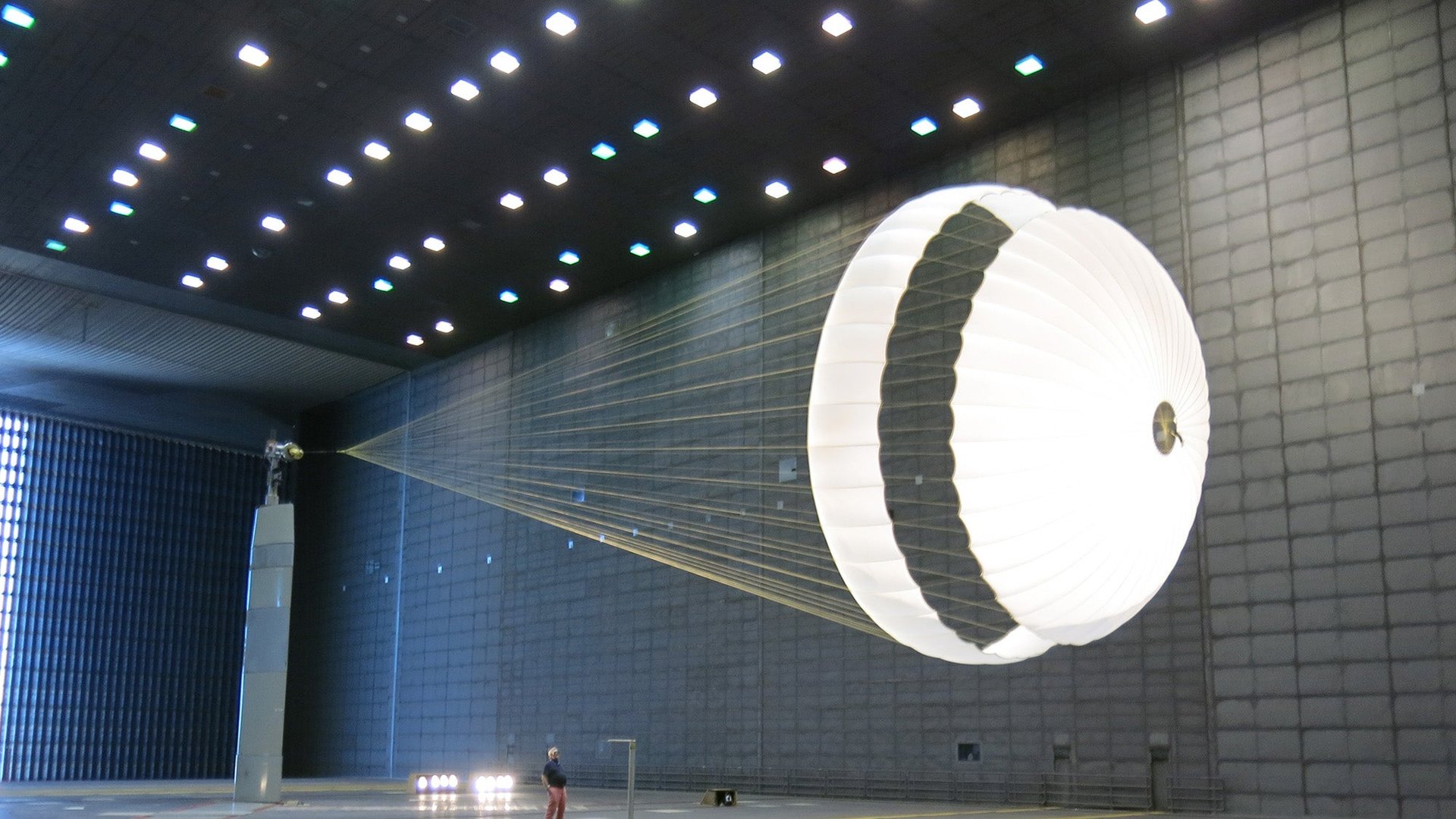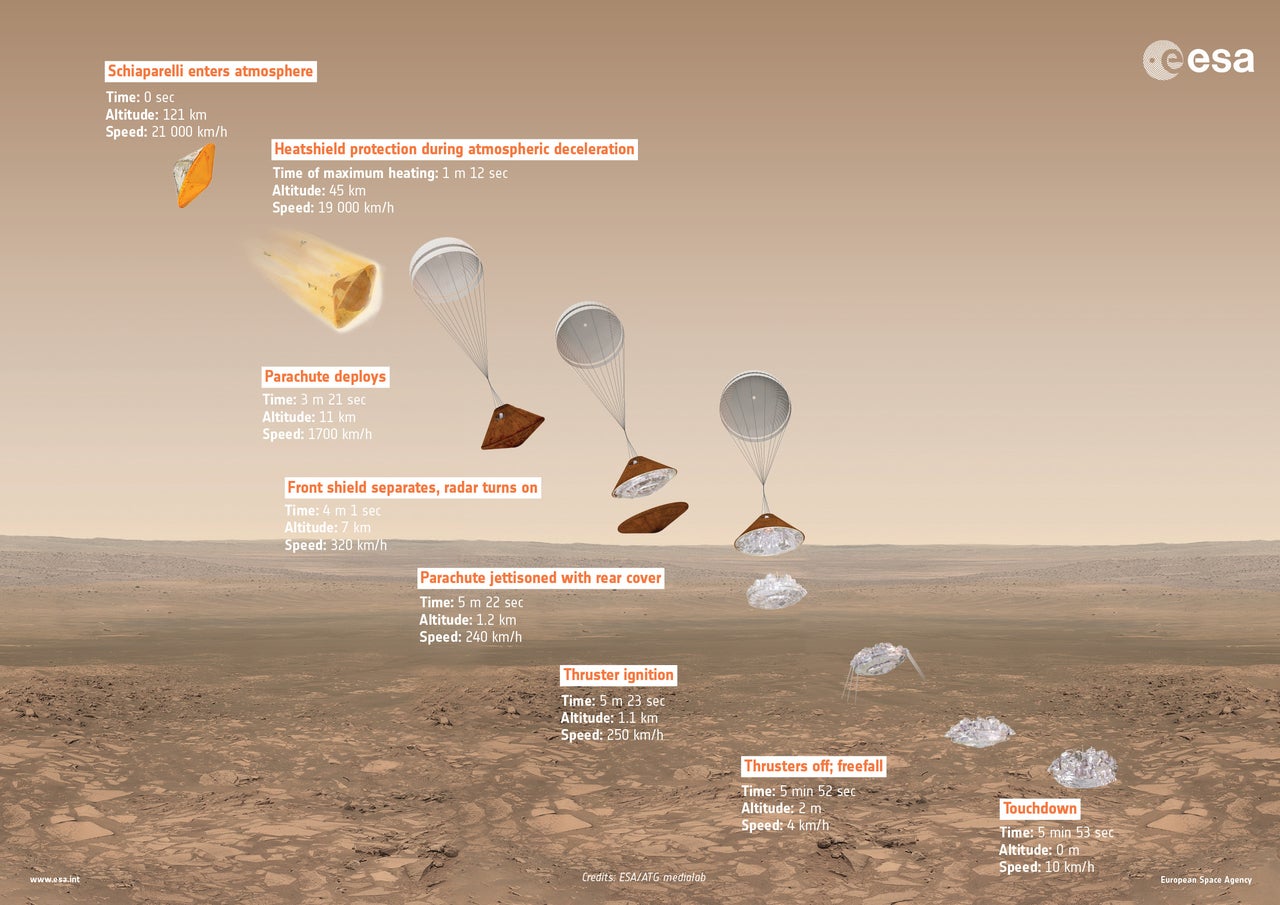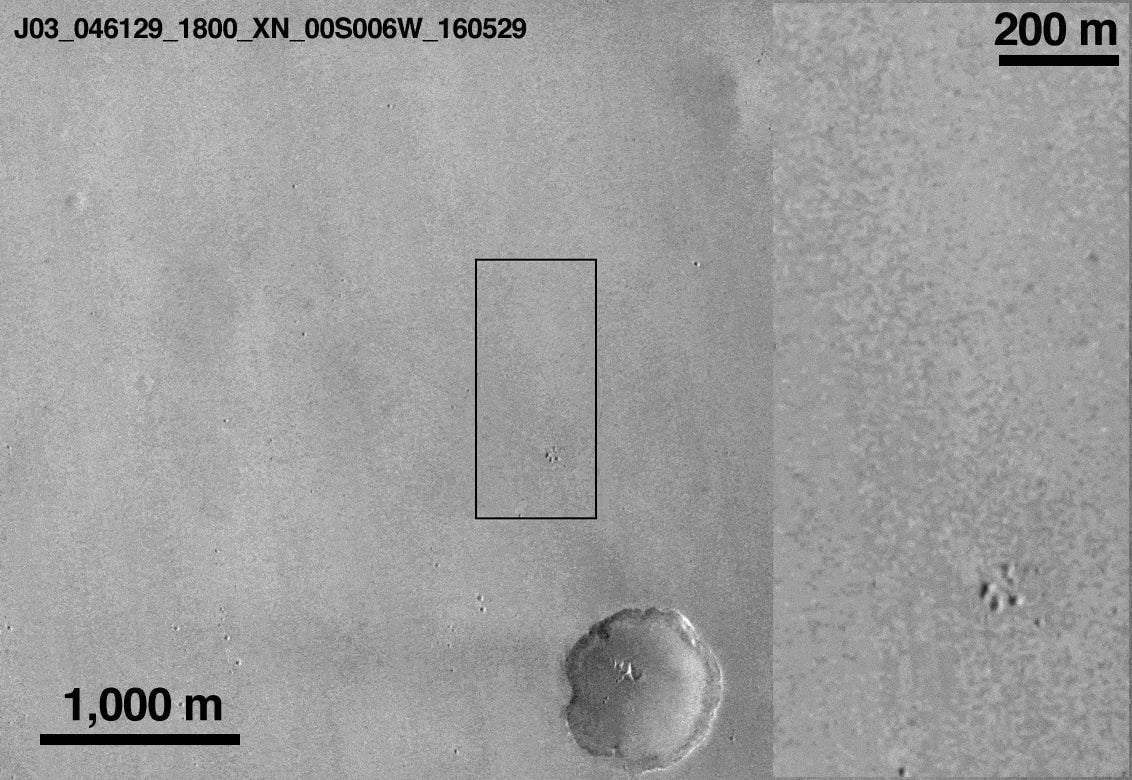This glitch is the most likely reason the European Mars lander failed
What could be worse for a programmer than being told that a software glitch ruined an important project? Well, how about if that software glitch happened on Mars, when a new robot was about to make a do-or-die landing.


What could be worse for a programmer than being told that a software glitch ruined an important project? Well, how about if that software glitch happened on Mars, when a new robot was about to make a do-or-die landing.
Over the past week, scientists at the European Space Agency (ESA) have been deconstructing the data sent by the Schiaparelli craft, which on Oct. 19 failed to make a safe landing on the red planet. The most likely culprit, they believe, is a software glitch that either triggered commands too early or misinterpreted data coming from the various sensors on the lander.
Here’s what was supposed to happen:
- At 121 km above the surface of Mars, Schiaparelli enters the Martian atmosphere.
- For 1 minute and 12 seconds, its heat shield protects Schiaparelli from burning up on re-entry.
- At 45 km above the surface of Mars, the parachute is released to slow down the descent.
- At 4 minutes and 1 second since the start, the heat shield separates. Then at 5 minutes and 21 seconds, the parachute separates.
- Immediately after, the thrusters fire, which burn for 30 seconds and bring Schiaparelli down with a soft thud.

The data Schiaparelli sent back reveals that the parachute separated a minute too early. As that happened, the thrusters should’ve fired for 30 seconds. Instead they fired only for 3 seconds before they were turned off, because the lander’s computer thought they were close to the ground.
The result? The lander went down crashing from a height of more than 2 km above the surface. The evidence of the resulting, probably explosive, landing can be seen in the before and after picture captured by a Mars satellite.

The good news is that the faults are not fatal for the second part of the ExoMars mission, which planned to use updated landing gear to land a rover on Mars in 2021. There is a possibility that the required changes can be made without requiring major design overhaul that could delay the mission.
The bad news is that, among the elements to be reused to build the new landing gear, there was supposed to the same computers, software, and sensors that seem to have gone wrong in the 2016 mission. The remaining technology was to be provided by Roscosmos, the Russian space agency which has partnered with ESA for both parts of the mission.
And the real trouble is that the ExoMars mission has a $300-million shortfall, which ESA will be requesting from the European Union in December, with memories fresh of this month’s crash landing.
Johann-Dietrich Wörner, the director general of ESA, says he doesn’t expect a problem securing the money. He says the mission was a 96% success, because it put the main scientific payload, the Trace Gas Orbiter, in orbit around Mars and secured most of the data that was to be acquired by Schiaparelli.
Others are not so confident that they will be able to secure the money. “It would have been much nicer,” Jorge Vago, an ExoMars scientist, told Nature, “to be able to go to the ministers with a mission where both elements had performed flawlessly.”